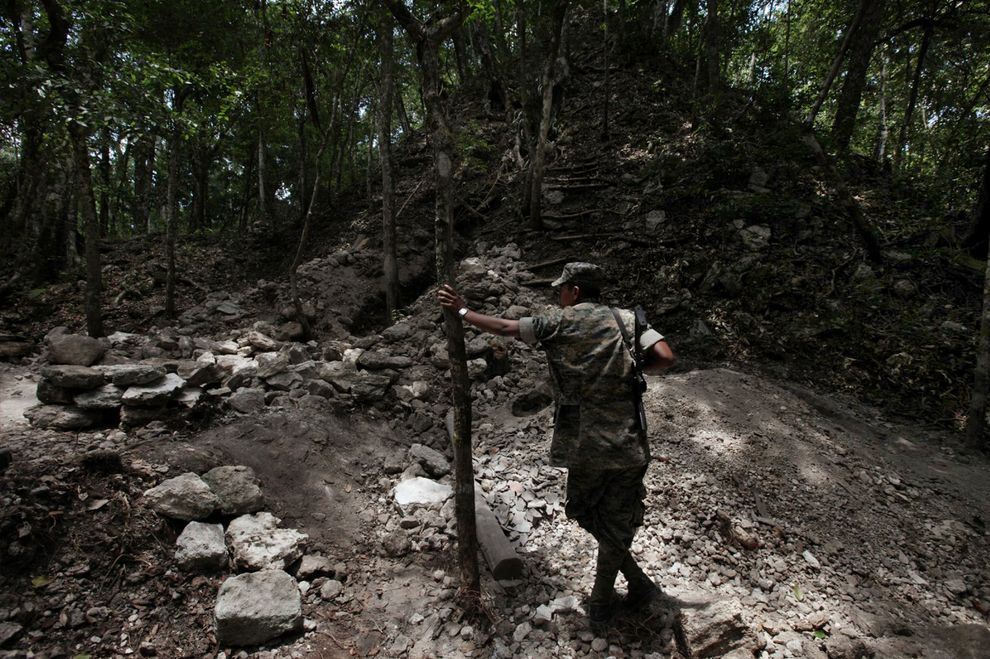
Losing Maya Heritage to Looters
for National GeographicDeep in the jungle in the north of Guatemala, along deep-rutted 4×4 tracks, the pyramids of the great Maya city of Xultún are hidden under heavy vegetation and oddly symmetrical hills. But crudely cut tunnels in the sides of the hills signal a modern intrusion.
The tunnels are the work of “huecheros“—the local slang term for antiquity looters, derived from the Maya word for armadillo. On a building overlooking an ancient plaza, the looters scrawl a message, brazen and taunting: “We, the huecheros, stuck it to this place.”
Almost every pyramid in the sprawling site has a looter’s tunnel on at least one side. Most of the hieroglyphic panels, the pottery, and the jade from tombs here have been raided and sold on the black market to wealthy foreigners. One of the tallest pyramids—a majestic building that slices high in the air like the Temple of the Great Jaguar—was actually cut in half by looters, making it look like a giant stone napkin holder.
Xultún is part of an international trade in Maya antiquities that spread across much of the region in the 1980s and ’90s and has scraped away what little opportunity was left to modern scientists to understand the people who once lived here. This amputation of cultural history—in many ways stretching back to the conquest of the New World—has left us with far more questions than answers about the Maya.
Looting continues to this day, though at a lower rate. Meanwhile, archaeologists, philanthropists, nongovernment organizations, and other leaders are grappling with the fallout from the country’s cultural heritage being plundered for decades.
For full story click here
Xultún is not alone, nor is it terribly unusual. The Mesoamerican antiquity trade goes back almost to the Spanish conquest. In the beginning, Maya sites were spared from looting because they were mostly unknown, but by the 20th century archaeologists were working in the region and uncovering beautiful cities in southern Mexico and Central America.
This continued until the 1970s and ’80s, when civil strife forced the scientists to abandon the sites. The workers they left behind, now expert in locating ancient tombs, turned to the only work they had left to them—raiding untouched sites for things to sell on the black market. (Take our interactive Maya quiz.)
It takes about four hours to get to Xultún from civilization. From Flores, a small tourist city on Lake Petén Itzá, the road starts out on pavement but quickly turns to gravel, then dirt roads, and then muddy 4×4 tracks. (See our interactive Maya map.)